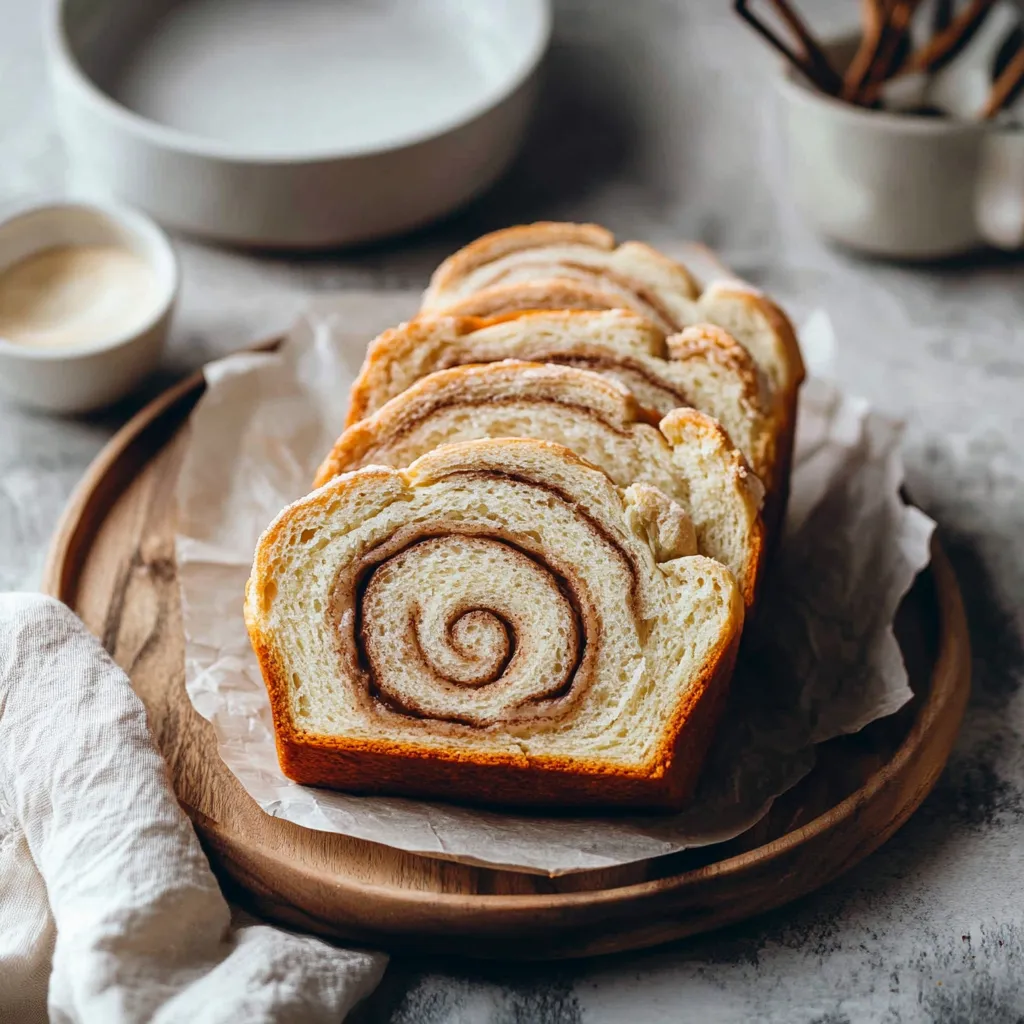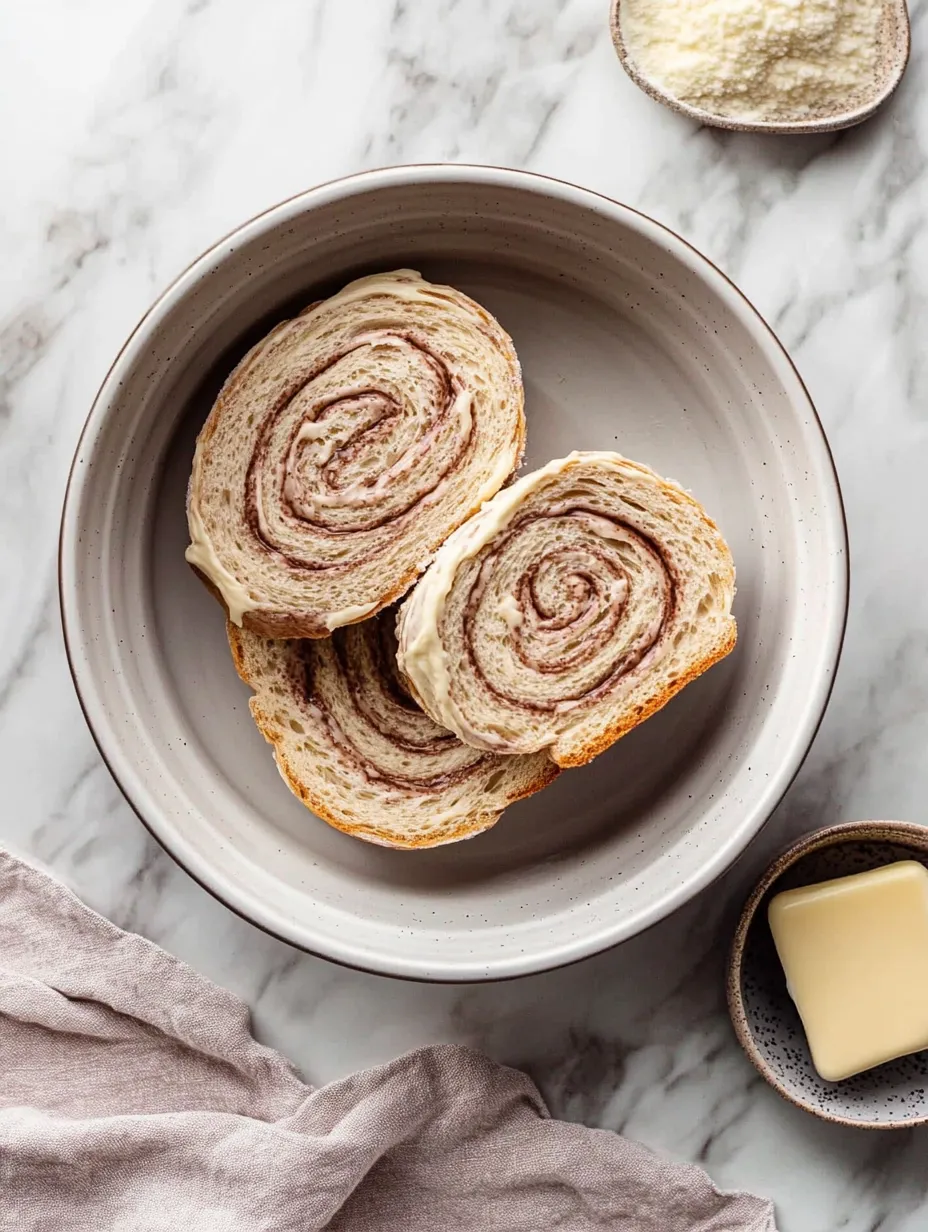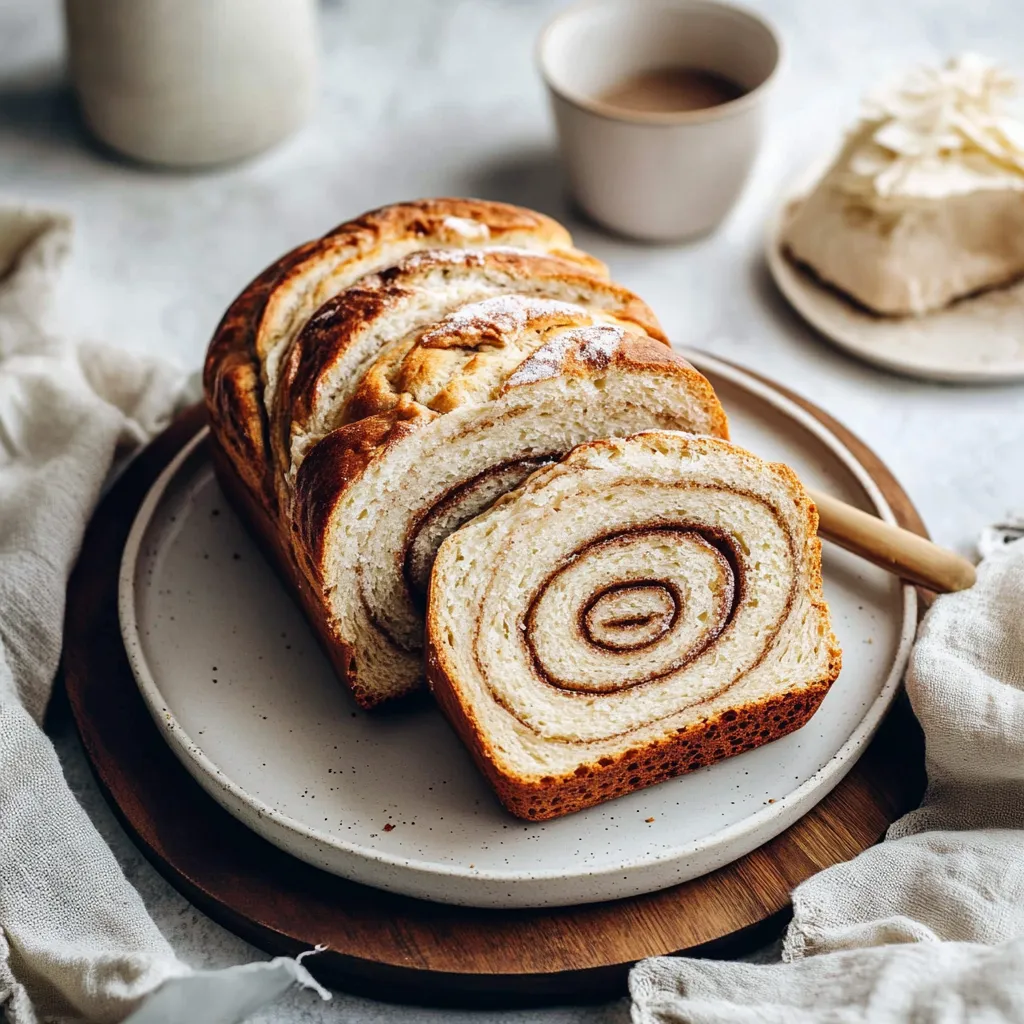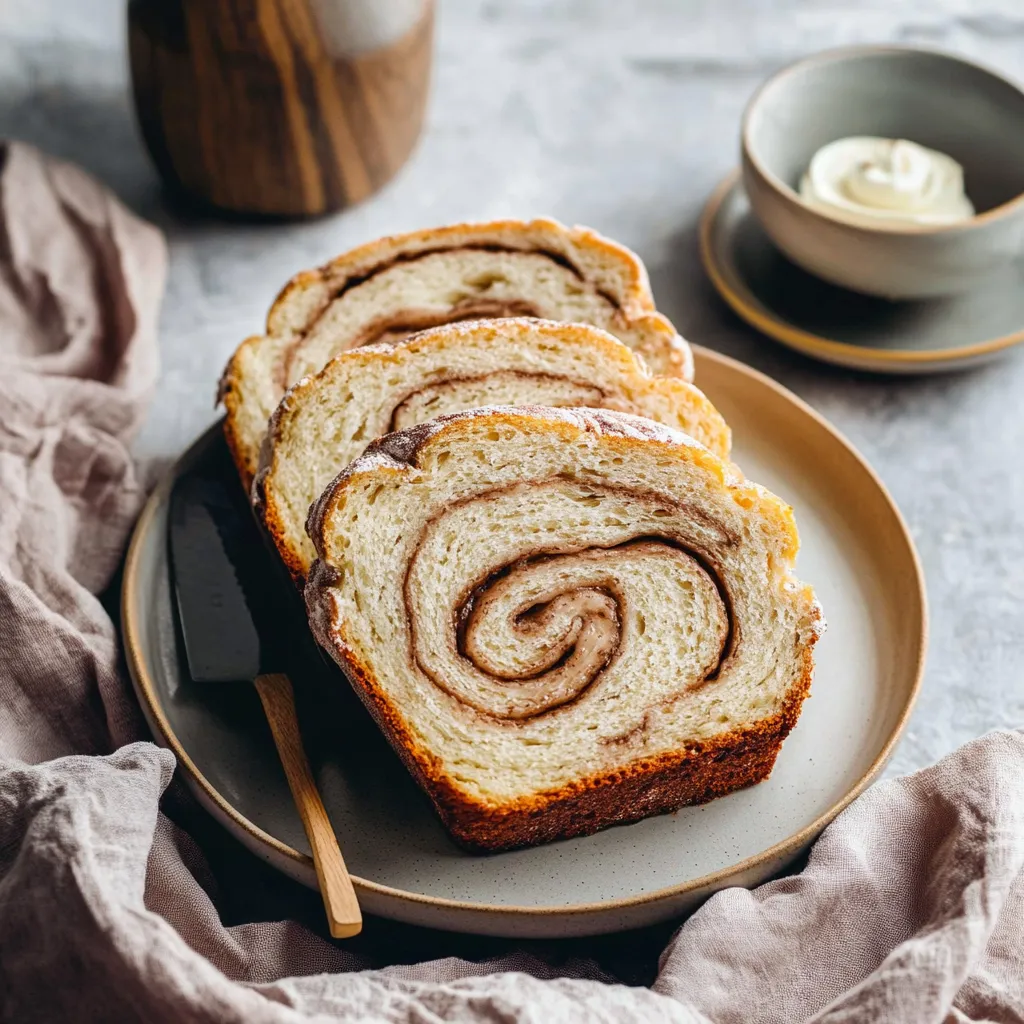 Pin it
Pin it
When the scent of freshly baked cinnamon swirl bread fills your kitchen, it creates a cozy, inviting feeling that's simply irresistible. This timeless favorite blends the joy of basic breadmaking with the tempting delight of a sweet, cinnamon swirl, giving you a loaf that looks amazing and tastes even better.
I've spent many years tweaking this recipe, and I've found that success comes down to being patient and watching the small details. The first day I got that flawless spiral with no gaps, I finally got why professional bakers feel so proud of what they make.
Key Ingredients
- Bread flour: Get it fresh and unbleached - the protein level really matters for good structure
- Active dry yeast: Must be fresh and properly activated - always look at those dates
- Whole milk: Brings a richness you just can't get with plain water
- Unsalted butter: Lets you decide how much salt goes in
- Ground cinnamon: Should smell strong and sweet - grab new stuff if yours is over 6 months old
 Pin it
Pin it
Making Your Bread
- Step 1:
- Start by waking up your yeast in warm water (100-110°F) with a tiny bit of sugar. It'll get foamy and bubbly in about 5-10 minutes. No foam means your yeast might be dead.
- Step 2:
- While waiting, warm your milk to match the water temperature. Mix it with slightly cooled melted butter. Getting this temperature right is super important - too hot and you'll kill your yeast.
- Step 3:
- Mix bread flour, the rest of your sugar, and salt in a big bowl. Make a hole in the middle and pour in your wet stuff. Stir until you've got a rough, shaggy-looking dough.
- Step 4:
- Dump it onto a floured counter and knead for 8-10 minutes until it feels smooth and stretchy. Your dough's ready when you can stretch a small piece thin enough to see through without it tearing.
- Step 5:
- Put it in a greased bowl, cover with a damp towel, and let it grow in a warm spot until it's twice as big, usually 1-2 hours. Around 75°F works best.
- Step 6:
- Once it's risen, punch it down and roll it out to an 8x20-inch rectangle. Don't guess - actually grab a ruler for this part.
- Step 7:
- Brush it with beaten egg white and sprinkle your cinnamon-sugar mix all over, but leave a half-inch space around the edges.
- Step 8:
- Roll it up tightly from the short end, pinching the edges to seal everything in. The tighter your roll, the prettier your swirl will look.
 Pin it
Pin it
I first learned about this bread in my grandma's kitchen, where she taught me that getting those perfect swirls means rolling the dough just right. "Handle it carefully but firmly," she always said, "like you're wrapping up a baby."
Creating Stunning Spirals
After making tons of loaves, I've learned that getting that beautiful spiral comes down to a few things: Rolling the dough to even thickness all over. Spreading the cinnamon sugar evenly. Keeping good tension as you roll. Making sure the seam is totally sealed.
Watching Your Temperatures
Getting the temps right makes all the difference: Keep wet ingredients around 100-110°F. Find a warm spot for rising. Set your oven correctly. Let the bread cool all the way before cutting.
Fixing Common Problems
Here's how to handle typical issues: For gaps in your swirl, use more egg white next time. If it's too dense, your yeast might be old. For uneven rising, turn the pan halfway through. If cinnamon sugar leaks out, you didn't leave enough empty space at the edges.
Tasty Serving Ideas
While it's great on its own, you can also try: Making incredible French toast topped with maple butter. Using it as the base for bread pudding. Grilling slices with cinnamon honey. Creating homemade ice cream sandwiches.
Through years of making this bread, I've realized its real magic isn't just in the swirl, but in how it brings everyone together. The waiting while it bakes, the happiness of that first warm slice, and how it makes regular days feel special - that's what really makes it worth making.
Working With Rich Dough
I've noticed some interesting things about enriched dough after many batches: The fat changes how the gluten forms. The sugar affects how the yeast works. The protein level determines the structure. Getting the right moisture makes the texture perfect.
Fun Twist Ideas
 Pin it
Pin it
While keeping the classic in mind, try these: Orange and cardamom swirl. Dark chocolate with cinnamon. Maple and pecan filling. Using brown butter for extra flavor.
Quick Fix Solutions
When things go wrong, try these fixes: If the dough seems dry, add milk just a teaspoon at a time. Too sticky? Let it rest before adding more flour. Not risen enough? Give it more time. Over-risen? Reshape it and start the second rise again.
Sharing Your Creation
This bread makes wonderful presents: Wrap it in cloth while still warm. Add some ideas for serving. Pair it with some homemade butter. Tell people the story of how you made it.
After making so many loaves, I now see this cinnamon swirl bread as more than just food - it's a way to practice patience, learn new skills, and bring comfort to others. Whether you're making it for family breakfast or giving it to friends, each loaf has the power to create little moments of happiness and connection.
Frequently Asked Questions
- → Can I prep the dough early?
- You can store the dough in the fridge for the first rise overnight. Make sure to let it warm up a bit before shaping.
- → Why does my swirl separate?
- Moisture can cause gaps. To avoid this, brush the dough with egg whites and poke a few small holes before putting it in the oven.
- → Can this bread go in the freezer?
- Totally! Wrap it up well and freeze for three months. Leave it in the fridge overnight to thaw.
- → Can I switch bread flour for all-purpose?
- Bread flour works better for a stronger texture, but you can use all-purpose flour if needed. Just expect a softer structure.
- → How can I tell if the bread is cooked through?
- It’s done when the top is golden and a thermometer reads 195-200°F in the center.
